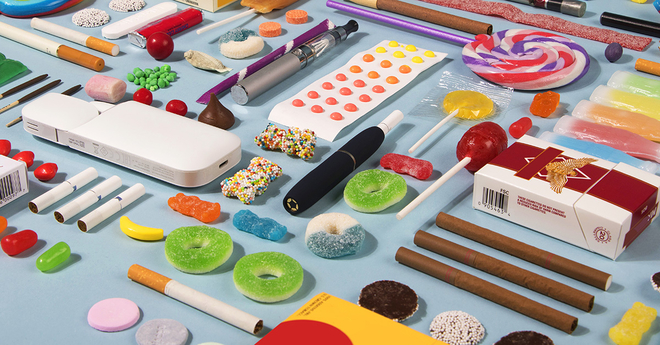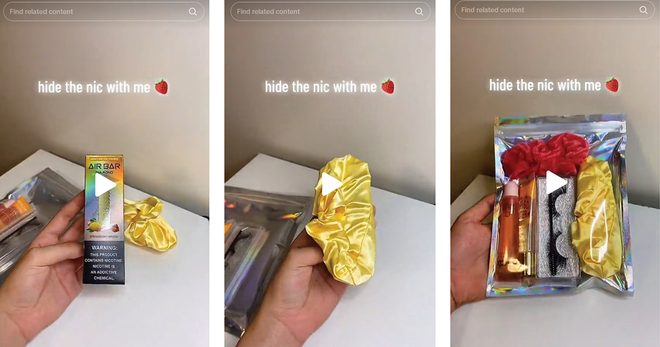Young people who vape are much more likely to become smokers, new research confirms
Young people who had ever used e-cigarettes had seven times higher odds of becoming smokers one year later compared with those who had never vaped, according to a new Truth Initiative study.
The link between vaping and future cigarette use serves as a stark warning for the need to regulate all nicotine products to protect youth and young adults, especially as the Food and Drug Administration reviews e-cigarette maker applications to decide which products can remain on the market. Youth e-cigarette use remains at epidemic levels – the 2020 National Youth Tobacco Survey finds that one in five high school students (19.6%) and one in 20 middle school students (4.7%) reported being a current e-cigarette user. Vaping could erase decades of work that have brought youth smoking to a historic low of 3.7%.
The research finds that, while only 2.4% of young people who had never used an e-cigarette in 2018 tried smoking the following year, more than a quarter (27.5%) of those who started using e-cigarettes in 2018 went on to try combustible cigarettes a year later. Some of those became current smokers – more than 7% of those who had ever used an e-cigarette in 2018 became current smokers a year later, compared to fewer than 1% of those who had never used an e-cigarette in 2018. The study, published in Addictive Behaviors, followed youth between 15-27 who had never tried cigarettes or e-cigarettes in 2017. Researchers followed up with participants in 2018 to ask if they had ever used e-cigarettes, and then again in 2019 to ask about their e-cigarette and cigarette use.
E-cigarettes users continue vaping a year later
Is vaping JUUL adictive?
The research also found that many young people who started vaping continued to do so a year later – demonstrating the addictiveness of nicotine found in most e-cigarettes. More than one-third (36.7%) of those who first used an e-cigarette in 2018 were current vapers in 2019, compared to only 2.5% of those who had never used an e-cigarette in 2018.
The link was especially strong for JUUL. Those who had ever tried JUUL had 17 times higher odds of being a regular JUUL user a year later compared to those who had never used an e-cigarette in 2018.
Users of older generations of e-cigarettes also more likely to smoke
Does vaping lead to smoking?
Previous research has also found a link between vaping and subsequent smoking, including a 2019 study published in JAMA that found young people who vaped had four times the odds of going on to smoke traditional cigarettes compared to their non-vaping peers. These studies focused on older e-cigarettes that didn’t have as much nicotine as the most popular products that are driving today’s youth vaping epidemic.
Popular e-cigarettes like JUUL and its copycats, including many disposable varieties that have grown rapidly in popularity, have some of the highest nicotine content among e-cigarettes. Before the introduction of JUUL in 2015, e-cigarettes contained anywhere from 1%-2.4% nicotine strength. JUUL pods contain 5% nicotine – equivalent to the nicotine in 20 cigarettes. These products have driven up the average nicotine concentration in e-cigarettes sold in U.S. retailers, which more than doubled from 2013 to 2018, according to a previous study by Truth Initiative and Centers for Disease Control and Prevention.
The need to remove all flavored e-cigarettes
How popular are flavored e-cigarettes?
Flavored e-cigarettes are continuing to drive the youth vaping epidemic with more than eight in 10 young users (82.9%) reporting they use flavored e-cigarettes, according to the 2020 National Youth Tobacco Survey.
Though recent federal restrictions limited flavors for some types of e-cigarettes, many flavors remain on the market due to an FDA policy that allows menthol in all forms and only limits fruit and candy flavors for pre-filled, closed-system e-cigarettes, like JUUL. That means disposable and open-system, refillable devices still offer a variety of kid-friendly flavors, including cotton candy, sour apple and O.M.G. (orange, mango, guava), among many others.
September 9 marked the deadline for e-cigarette makers to submit applications to the FDA to keep their products on the market and as the agency reviews these products, it must act quickly to remove all flavored e-cigarettes, including menthol, that put a generation at risk of nicotine addiction.



